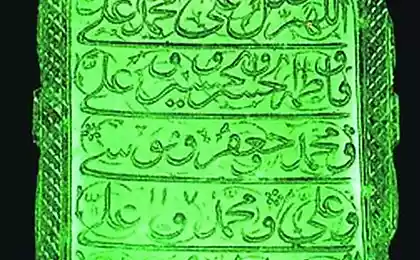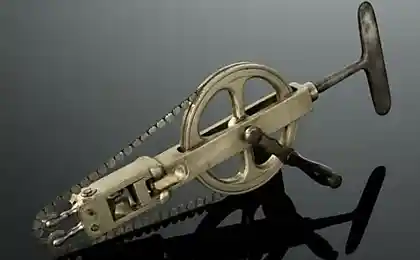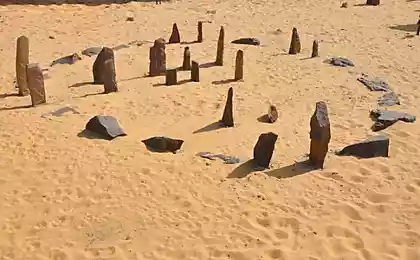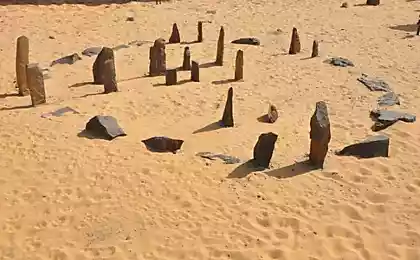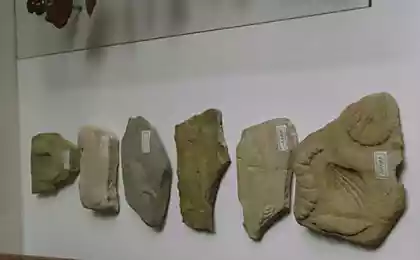470
On the island of Lolland found an amulet of the X century – "the hammer of Thor»
The find, which dates back to X century, can put an end to the debate about what exactly is portrayed of these amulets.
A small amulet of the X century "hammer of Thor" – was found recently on the Danish island of Lolland. Earlier, more than a thousand finds were made throughout Northern Europe, but only the instance of Lalanna has a runic inscription.
Ninety four million nine hundred eighty nine thousand three hundred eighty one
"Hammer" was discovered in the village Kobelev local "lover of the detector search for" Christiansen Torben (Torben Christjansen). He reported his findings to the archaeologist Anders Rasmussen (Anders Rasmussen) from the Museum Lallana and Falster.
"The hammer" cast in bronze and has traces of silver or tin plating, and remains Golden coating. On one side it is ornamented, one with a brief runic inscription.
Pendants in the form of "Thor's hammer" is usually interpreted as protective amulets worn by Scandinavian men and women. "We often see the "Thor's hammers" and Christian crosses occur together, providing double protection," says Peter Penz (Peter Pentz), an archaeologist from the National Museum of Denmark.
However, many researchers have previously expressed doubt that the amulets portrayed hammer. Some said that he had too short of a handle, others have indicated that the impact of the "hammer" would not be symmetrical.
Thirty two million six hundred sixty nine thousand ninety two
The new finding may dispel these doubts. The "hammer" of Lallana a runic inscription that reads "Hmar x is" – "hammerhead". The archaeologist notes that the person who made the inscription, was probably illiterate. He missed one letter in the word "sickle" – the correct spelling would be "Hamar". In addition, he turned the rune S.
The altitude of the runes small – from 3 to 7 mm. due to corrosion, small size labels and error it took some time to take it apart. The researchers say that the inscription could have done and totally competent man, but due to the fact that he does not have enough space, he was forced to pick one rune and drop another.
Near the "hammer of Thor" also found fragments of silver needles and a form for casting brooches. These findings suggest that nearby could be a workshop, in which made jewelry. In this case, the "hammer of Thor" could be made by local artisans.
The source: Past Horizons
Source: nkj.ru
A small amulet of the X century "hammer of Thor" – was found recently on the Danish island of Lolland. Earlier, more than a thousand finds were made throughout Northern Europe, but only the instance of Lalanna has a runic inscription.
Ninety four million nine hundred eighty nine thousand three hundred eighty one
"Hammer" was discovered in the village Kobelev local "lover of the detector search for" Christiansen Torben (Torben Christjansen). He reported his findings to the archaeologist Anders Rasmussen (Anders Rasmussen) from the Museum Lallana and Falster.
"The hammer" cast in bronze and has traces of silver or tin plating, and remains Golden coating. On one side it is ornamented, one with a brief runic inscription.
Pendants in the form of "Thor's hammer" is usually interpreted as protective amulets worn by Scandinavian men and women. "We often see the "Thor's hammers" and Christian crosses occur together, providing double protection," says Peter Penz (Peter Pentz), an archaeologist from the National Museum of Denmark.
However, many researchers have previously expressed doubt that the amulets portrayed hammer. Some said that he had too short of a handle, others have indicated that the impact of the "hammer" would not be symmetrical.
Thirty two million six hundred sixty nine thousand ninety two
The new finding may dispel these doubts. The "hammer" of Lallana a runic inscription that reads "Hmar x is" – "hammerhead". The archaeologist notes that the person who made the inscription, was probably illiterate. He missed one letter in the word "sickle" – the correct spelling would be "Hamar". In addition, he turned the rune S.
The altitude of the runes small – from 3 to 7 mm. due to corrosion, small size labels and error it took some time to take it apart. The researchers say that the inscription could have done and totally competent man, but due to the fact that he does not have enough space, he was forced to pick one rune and drop another.
Near the "hammer of Thor" also found fragments of silver needles and a form for casting brooches. These findings suggest that nearby could be a workshop, in which made jewelry. In this case, the "hammer of Thor" could be made by local artisans.
The source: Past Horizons
Source: nkj.ru
British scientists have decoded the language of chimpanzees
What influences the choice of profession—7shagov to a balanced decision











